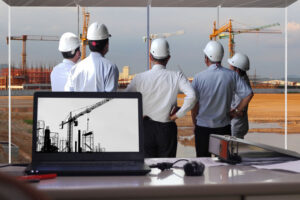 Crane accidents are relatively rare worksite incidents in the construction industry, but the injuries are usually severe or fatal when they do happen. OSHA has estimated that 93 percent of all crane accidents are due to human error, meaning the fault was improper use of crane equipment. These include accidents caused by improper operation, improper rigging, and failure to follow established procedures.
Crane accidents are relatively rare worksite incidents in the construction industry, but the injuries are usually severe or fatal when they do happen. OSHA has estimated that 93 percent of all crane accidents are due to human error, meaning the fault was improper use of crane equipment. These include accidents caused by improper operation, improper rigging, and failure to follow established procedures.
Here are the most common causes of crane accidents that you need to watch out for when operating cranes on your jobsite.
Tipping Cranes
Overturning cranes pose a severe threat to both the crane’s operator and the workers on the ground. Mobile cranes can tip and cause accidents if used on uneven ground, especially if a load is attached. The weight of a crane can make ground conditions more dangerous to maneuver on. The best way to ensure ground conditions do not interfere with the performance of your crane is to invest in crane mats. These mats will stabilize and support your heavy machinery, so you are less likely to have an accident on the job.
Electrical Shocks
Electrical shocks are most common when the crane is mobile. Mobile cranes are smaller and frequently used in tight settings where overhead power lines pose a threat. If the operator is not careful, they can swing the boom and hit one of these lines. If a crane’s boom or load line contacts a live electrical wire, the current can run through the equipment and anyone touching it, causing fatal electrocution. This is especially dangerous for the riggers holding on to a tagline.
High Winds
Unexpected gusts of wind have been known to topple cranes or cause falls. Maximum allowed wind speeds vary due to crane type and configuration, but low wind speeds for lifts are always desirable. It is important to follow proper procedures when operating cranes in windy conditions and to cease operations immediately if inclement weather of any type is expected or noticed in the vicinity.
Crane Assembly or Disassembly
Tower cranes assembled and disassembled on the job site pose a threat to construction workers. At these stages of the construction project, workers often climb up and down the crane to bolt the parts into place. If a worker slips and is not adequately harnessed, they can fall off the crane.
At Ritter Forest Products, we understand the dangerous nature of construction work. That is why we supply our customers with top-of-the-line construction products. Our crane mats and other ground products are strong and durable, so you can feel safe when working at great heights.
Contact us today to discuss what products you need to keep your construction site safe!








